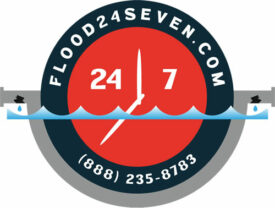Home Flood Remediation Steps – What To Do First
When your home experiences a flood, it can be a devastating and overwhelming situation. Water damage can lead to structural issues, mold growth, and the loss of valuable possessions. It’s crucial to take immediate action to minimize the damage and restore your home to its pre-flood condition. In this article, we will guide you through the essential steps to take after your home is flooded, ensuring a safe and efficient remediation process.
1. Ensure Safety First
The safety of you and your family should be your top priority after a flood. Before re-entering your home, assess the overall safety of the area. Ensure that the power is turned off to prevent electrical hazards. Be cautious of any structural damage that may have occurred, such as weakened walls or floors. If you have any concerns about the safety of your home, contact a professional before entering.
2. Document the Damage
Before initiating any cleanup or remediation, thoroughly document the flood damage for insurance purposes. Take photographs and videos of each affected area, including walls, furniture, and personal belongings. This documentation will help support your insurance claim and ensure fair compensation for the damages incurred.
3. Contact Your Insurance Provider
Notify your insurance provider about the flood incident as soon as possible. They will guide you through the claims process and provide you with the necessary information and documentation requirements. Follow their instructions closely and keep a record of all communication with your insurance company.
4. Remove Standing Water
Once you’ve ensured safety and documented the damage, the next step is to remove any standing water from your home. If the water level is minimal, you can use a wet/dry vacuum or a pump to extract the water. For significant flooding, it’s advisable to seek professional assistance from water damage restoration experts who have the proper equipment and expertise to handle the situation effectively.
5. Dry Out the Affected Areas
After removing the standing water, it’s crucial to thoroughly dry out the affected areas. Open windows and doors to promote air circulation. Use dehumidifiers, fans, and heaters to expedite the drying process. It’s essential to eliminate all moisture to prevent mold growth and further damage to your home’s structure.
6. Salvage What You Can
Assess the salvageable items in your home. Remove any furniture, carpets, or personal belongings that can be salvaged. Thoroughly clean and disinfect these items to prevent mold and bacteria growth. Dispose of any unsalvageable items properly, following local regulations.
7. Clean and Disinfect
Cleaning and disinfecting all surfaces and materials affected by the flood is crucial to prevent mold growth and maintain a healthy living environment. Use a mixture of water and mild detergent to clean walls, floors, and other hard surfaces. Additionally, use a disinfectant to kill any remaining bacteria or pathogens.
8. Check for Mold Growth
Even after thorough drying and cleaning, there is still a risk of mold growth in areas affected by the flood. Monitor your home for any signs of mold, such as a musty odor, visible mold growth, or increased allergy symptoms. If you notice any mold, contact a professional mold remediation company to assess and remove the mold properly.
9. Repair and Restore
Once your home is dry and free from mold, it’s time to initiate the repair and restoration process. This may involve repairing damaged walls, replacing flooring, and fixing electrical and plumbing systems. It’s advisable to hire licensed contractors with experience in flood damage restoration to ensure high-quality repairs.
10. Prevent Future Flood Damage
To minimize the risk of future flood damage, take preventative measures such as installing flood-resistant barriers, sealing foundation cracks, and ensuring proper drainage around your property. Additionally, consider purchasing flood insurance to protect your home and belongings in case of future flooding events.
Experiencing a flood in your home can be a challenging ordeal, but by following the proper steps for flood remediation, you can restore your home and move forward. Remember to prioritize safety, document the damage, contact your insurance provider, remove standing water, dry out the affected areas, salvage what you can, clean and disinfect, check for mold growth, repair and restore, and take preventative measures for the future. By taking these steps, you can navigate the post-flood process with confidence and ensure the well-being of your home and family.
Home Flood Remediation FAQs
Question: How long does it take for a flooded home to dry out completely?
Answer: The drying time can vary depending on the extent of the flood damage and the conditions in your home. In general, it can take anywhere from a few days to several weeks for a flooded home to dry out completely.
Question: Can I clean up the flood damage myself?
Answer: While you can handle minor water damage cleanup, it’s recommended to seek professional help for significant flooding incidents. Professionals have the necessary equipment and expertise to ensure proper drying, cleaning, and restoration.
Question: Will my homeowner’s insurance cover flood damage?
Answer: Standard homeowner’s insurance policies usually do not cover flood damage. You need a separate flood insurance policy to protect your home and belongings from flood-related losses. Contact your insurance provider to understand your coverage options.
Question: How can I prevent mold growth after a flood?
Answer: To prevent mold growth, ensure thorough drying of the affected areas, use dehumidifiers, promote proper ventilation, and promptly remove any water-damaged materials. If you suspect or notice mold growth, contact professionals for mold remediation.
Question: Is it necessary to hire a professional for flood damage restoration?
Answer: While minor water damage cleanup can be handled on your own, hiring a professional for flood damage restoration is highly recommended. Home flood remediation professionals have the expertise, equipment, and knowledge to handle large-scale flood remediation effectively.

